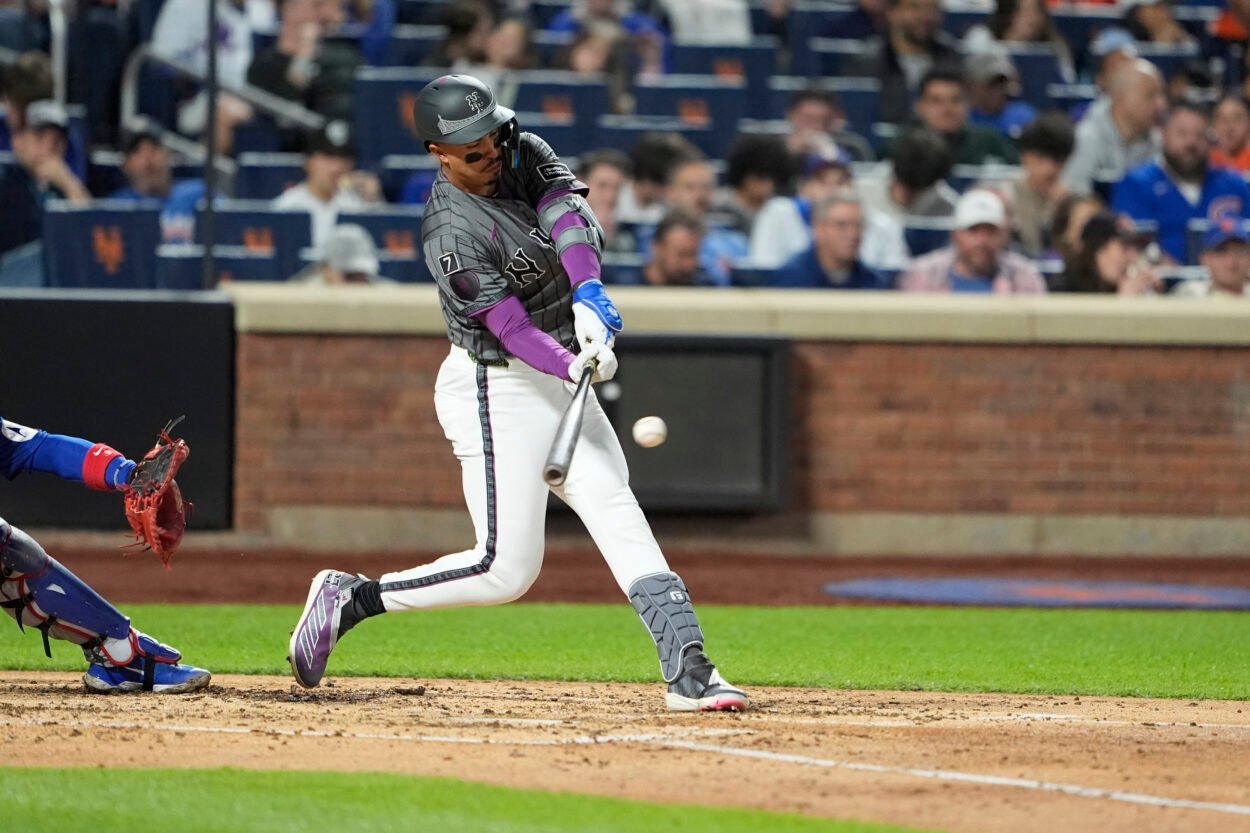
Walk around the Mets’ facility long enough and you’ll hear plenty of conversations about first base, third base, and how the organization plans to balance power with defense in 2026. That’s the crossroads where Mark Vientos now sits, and the picture around him keeps shifting.
Some of that is out of his control. Some of it isn’t.
A breakout that raised expectations, followed by a season that reopened every question
The Mets once believed they had unearthed a middle-of-the-order masher in Vientos. His 2024 season changed the way the front office talked about him. He slugged .516, launched 27 homers, and posted a 132 wRC+. The power was loud, the swings were violent, and for stretches he looked like the kind of hitter who could flip a game with a single mistake from a pitcher.

That version of Vientos made the Mets rethink their long-term infield. It even gave them flexibility at the deadline. Then 2025 arrived, and the process behind those numbers slipped.
Over 121 games, Vientos hit .233/.289/.413 with 17 home runs and 61 RBIs. That drop wasn’t subtle. A player who was 32 percent above league average in 2024 suddenly played three percent below it the next year. The power flashes remained, but the consistency wasn’t there, and pitchers found ways to exploit the holes he hadn’t closed.
Even worse, the defensive regression was impossible to ignore. Vientos posted -10 defensive runs saved and -7 outs above average at third base over 556 innings. That isn’t just below average. That’s a liability.
A crowded infield makes his path even more difficult
The Mets want Pete Alonso back. They have Brett Baty penciled in at third base, and they believe the lefty slugger took real steps forward in 2025. If both players are in place, Vientos becomes something of an in-between piece — talented, powerful, but blocked.
The Mets can stomach a bat-only player if the offensive production warrants it. But Vientos didn’t show the same impact last season, and if he’s trending toward a full-time designated hitter without elite slugging numbers, the calculus changes. Teams don’t hand out everyday DH roles lightly anymore.
That’s why trade conversations are already buzzing. If the Mets keep Alonso, and if Baty is locked into third, Vientos becomes a logical candidate to move — unless he forces them to reconsider.
A player who believes he can rebound
To his credit, Vientos hasn’t shied away from the challenge. Speaking to Greg Joyce of the New York Post while handing out turkeys for the Amazin’ Mets Foundation, he sounded like a player eager to rebuild his footing.
“It feels like last year was a lot different from every other year, so I think [this year] is a lot similar to every other year that I had to come back and prove myself again,” he said.
“But I’m excited. I love proving myself. I love just getting better and trying to improve. I feel like this season I learned a lot about myself, and I’m excited for it.”
Those aren’t empty words. Vientos knows he’s fighting against both his own inconsistency and a depth chart that may push him toward the margins.
What comes next for Vientos — and for the Mets?
The Mets can still use his power, and his age keeps the door wide open for growth. But with Alonso negotiations ongoing and Baty trending upward, something eventually has to give. Either Vientos sharpens his defensive profile and rediscovers the swing that made him an impact hitter, or he becomes a movable piece in a winter where the Mets have already signaled their intent to reshape the roster.
For now, the opportunity is still there. The question is whether he can take it back.
